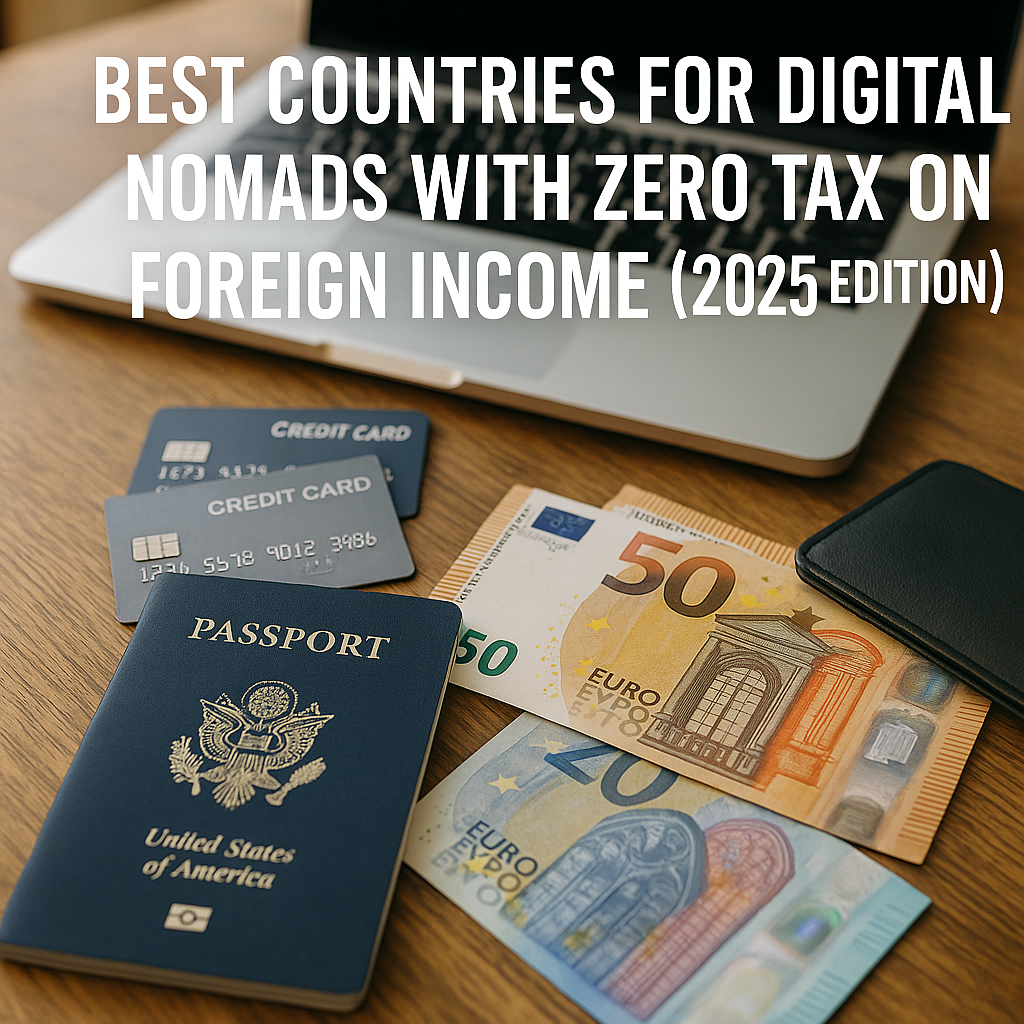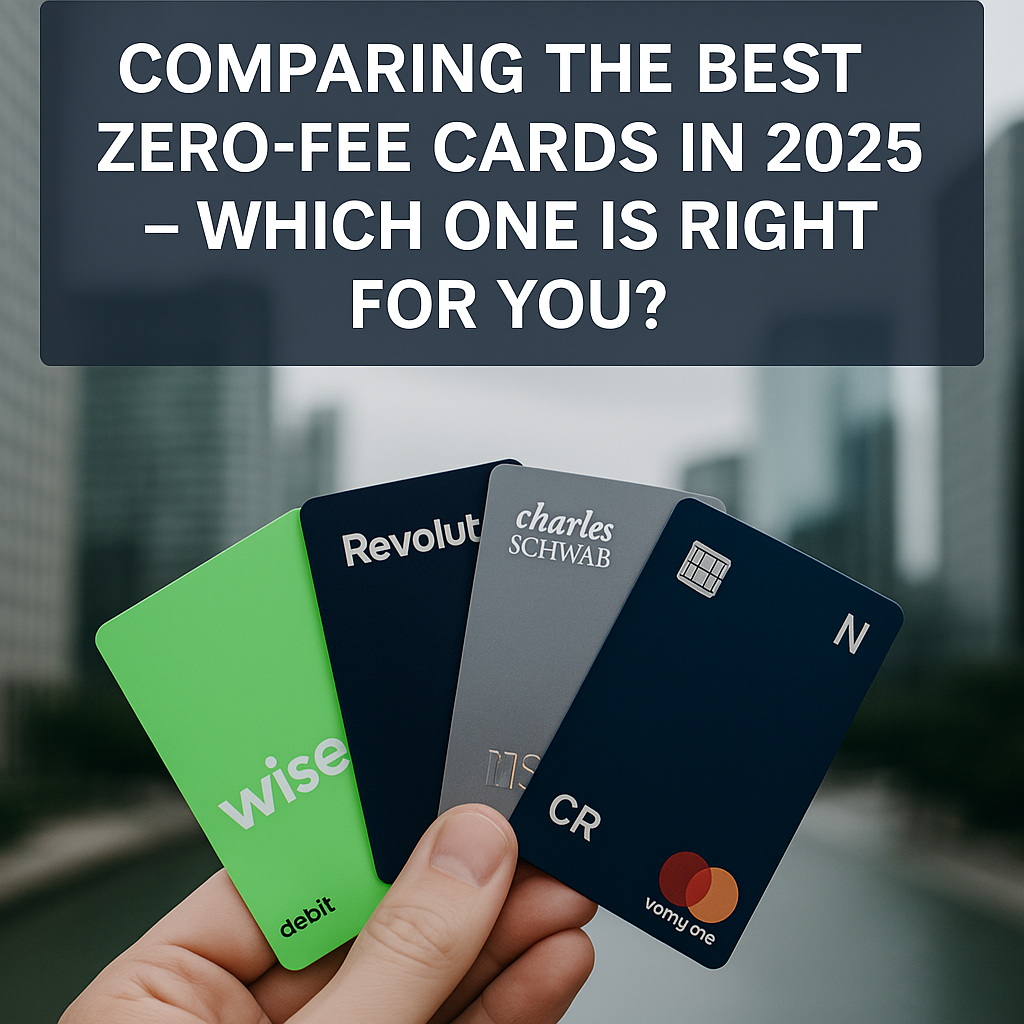A Strategic Guide to Legally Minimize Tax While Living Abroad
In 2025, digital nomads aren’t just chasing beaches and Wi-Fi anymore—they’re chasing tax efficiency.
More than ever, location-independent workers, freelancers, and entrepreneurs are making financial decisions based on one key question:
“Where can I live well—and legally pay zero tax on foreign income?”
This guide uncovers the best countries where digital nomads can earn globally, live locally, and avoid double taxation on their remote income—legally. These aren’t shady tax havens, but real jurisdictions that welcome remote workers and offer favorable tax policies.
Why Tax-Free Foreign Income Matters
If you’re earning in USD, EUR, or GBP but living in a lower-cost country, you’re already winning.
But the moment you become a tax resident in a high-tax country, up to 30–45% of your income could vanish.
The smart solution? Base yourself in a country that either:
- Doesn’t tax foreign-sourced income
- Doesn’t consider you a tax resident (under 183-day rule)
- Offers special “digital nomad” visas with tax exemptions
Top 7 Countries Where You Can Live + Pay Zero Tax on Foreign Income
1. Georgia 🇬🇪
- Foreign income tax: 0% (non-resident rule)
- Digital nomad visa: Yes (“Remotely from Georgia”)
- Stay length: Up to 365 days visa-free for many nationalities
- Monthly cost of living: ~$1,200
Why it works: Georgia doesn’t tax foreign income unless earned locally. No visa required for many countries. Capital: Tbilisi is a growing remote work hub.
2. Portugal (Madeira’s Digital Nomad Village) 🇵🇹
- Foreign income tax: 0% for non-habitual residents (NHR)
- Digital nomad visa: Yes (D7 Visa or NHR program)
- Stay length: Renewable annually
- Monthly cost of living: ~$1,800
Why it works: If structured properly under NHR, foreign freelance or business income may not be taxed for 10 years. Great infrastructure + EU access.
3. Panama 🇵🇦
- Foreign income tax: 0%
- Digital nomad visa: Yes (9-month remote work visa)
- Stay length: Up to 9 months (extendable)
- Monthly cost of living: ~$1,500–2,000
Why it works: Territorial tax system only taxes Panama-sourced income. Easy banking, USD currency, and favorable residency programs.
4. Thailand (Long-Term Visa via LTR) 🇹🇭
- Foreign income tax: Not taxed if not remitted into Thailand
- Digital nomad visa: LTR Visa (up to 10 years)
- Stay length: Up to 10 years
- Monthly cost of living: ~$1,200
Why it works: Foreign income that’s earned and kept abroad is not taxable. Chiang Mai and Bangkok are digital nomad hotspots.
5. Costa Rica 🇨🇷
- Foreign income tax: 0%
- Digital nomad visa: Yes (up to 2 years)
- Stay length: 1–2 years
- Monthly cost of living: ~$1,400
Why it works: The new “Rentista” or Digital Nomad visa allows you to live tax-free on foreign income. Natural paradise + high quality of life.
6. United Arab Emirates (Dubai) 🇦🇪
- Foreign income tax: 0%
- Digital nomad visa: Yes (1-year virtual work residence)
- Stay length: 1 year (renewable)
- Monthly cost of living: ~$2,500+
Why it works: No income tax at all. Modern infrastructure, world-class co-working spaces, and legal protection for remote workers.
7. Malaysia (DE Rantau Nomad Pass) 🇲🇾
- Foreign income tax: 0% on offshore earnings
- Digital nomad visa: Yes (DE Rantau Pass – 12 months)
- Stay length: 1 year (renewable)
- Monthly cost of living: ~$1,100
Why it works: Kuala Lumpur and Penang offer high-speed internet, global connectivity, and low costs—ideal for remote entrepreneurs.
Legal & Strategic Considerations
Before moving to a zero-tax destination, consider:
- Tax residency rules: 183-day rule or center of vital interests
- CFC rules (Controlled Foreign Corporation): May apply in your home country
- Remittance rules: Some countries tax only what you bring in
- Banking access: Open international-friendly accounts (Wise, Revolut, local banks)
- Proof of income: Most digital nomad visas require a minimum income (~$2,000/month)
Best Tools for Managing Money Abroad (For Nomads)
| Tool | Use Case | Key Benefit |
|---|---|---|
| Wise | International transfers | Real mid-market FX rates |
| Revolut | Spending + saving | Multi-currency accounts |
| Deel | Contractor compliance & pay | Global payroll solutions |
| N26 / Monzo | EU-based banking | Simple mobile banking |
| Payoneer | Freelance earnings | USD/EUR/GBP reception |
Final Thought
If you’re earning globally, there’s no reason to be taxed like you’re still local.
2025 offers digital nomads more freedom, more tools, and more legal pathways than ever.
By relocating to a country with zero foreign income tax and leveraging the right financial structure, you can maximize your savings, grow your wealth, and still enjoy the life you dreamed of—without losing half of your income to taxes.
The world is open. Your money should be too.



